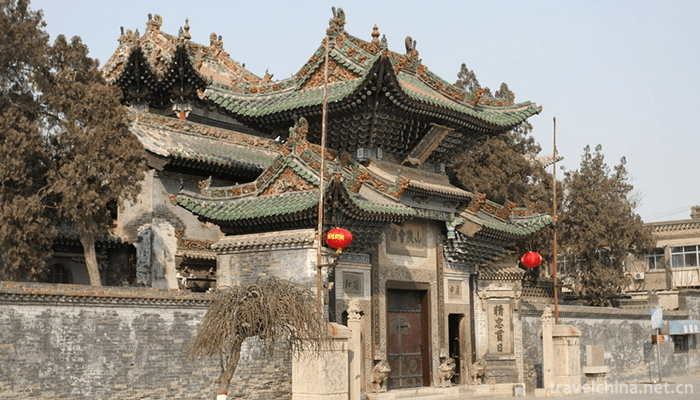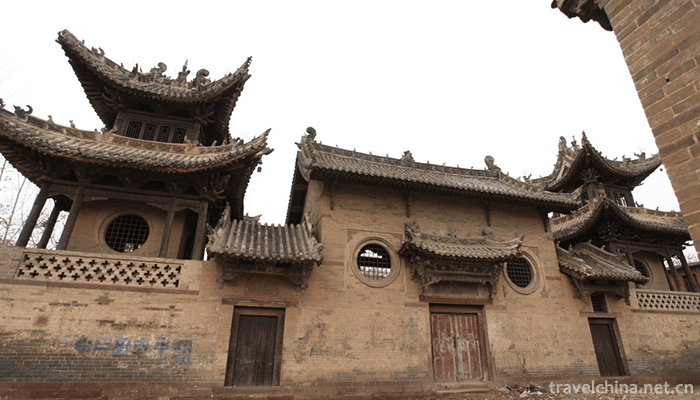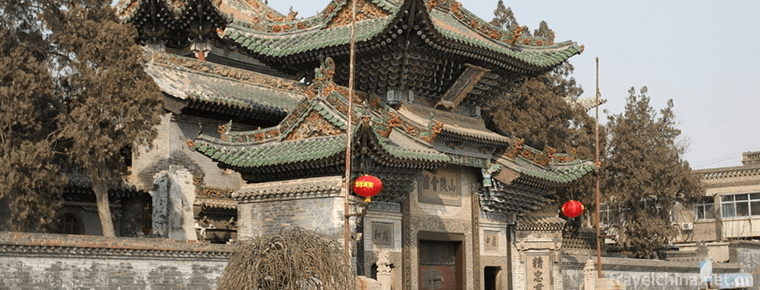Shanshan guild hall
Shanshan guild hall
Shanxi-Shaanxi Guild Hall is the place where Shanxi and Shaanxi merchants and businessmen associate with each other and worship gods. It combines exquisite architectural structure and exquisite sculpture art, fully demonstrates the wisdom and talent of the local working people in ancient times, and is a masterpiece of traditional palace architecture in ancient China. In the Ming and Qing Dynasties, Shaanxi and Shanxi formed two well-known commercial groups, Shanxi and Qin merchants. Shanxi and Shaanxi, separated by a river, have had a good story of Qin and Jin Dynasty since ancient times. At that time, Shanxi and Shaanxi businessmen, in order to confront the needs of Huizhou businessmen and other businessmen, often used the good neighboring provinces to combine with each other. People usually called them "Western businessmen". After the combination of Shanxi and Shanxi merchants, Shanxi and Shanxi Guild Halls (also known as Western Chambers of Commerce) have been built in many cities and towns, forming a strong force. The famous Shan-Shan Guild Hall includes the Shan-Shan Guild Hall of the Social Banner and the Shan-Shan Guild Hall of Liaocheng, among which the Shan-Shan Guild Hall of the Social Banner of Henan Province is known as the "First Guild Hall of China" and has now become a cultural tourism resource.
Overview
The main functions of Shan-Shan Guild Hall are as follows: it unites the businessmen in Qin and Jin Dynasties and many traders, and plays an active role in the exchange of business information, safeguarding the interests of fellow countrymen and businessmen, and mediating commercial disputes. Over the past five centuries, Shanxi and Shaanxi merchants have developed from salt industry to cotton, cloth, grain, oil, tea, medicinal materials, fur, finance and other industries. Shanxi and Shaanxi merchants, relying on their homeland, have expanded to key customs towns and commercial cities all over the country, starting from inland trade, until expanding trade to neighboring countries such as Mongolia, Russia and Korea. The trade activities of Shanxi and Shaanxi businessmen greatly enriched the commercial culture of ancient China and pushed China's commercial operation to a new height. Shanxi and Shaanxi businessmen in the Ming and Qing Dynasties pushed the history, wisdom and art of Shanxi and Shaanxi's business to the extreme. Shanxi and Shaanxi businessmen'great courage, long footprint and huge wealth made the world recognize the historical fact that "no business without west".
Among many Shanxi and Shaanxi guildhalls throughout the country, some are also called "Western Chamber of Commerce", others are called Shaanxi Guildhall or Western Qin Guildhall. Especially in Yun-Gui-Chuan area, because of the monopoly of Shaanxi Commercial Band's economy in Ming and Qing Dynasties, many guildhalls were preserved in the area, such as Chengdu, Chongqing and other central busy streets, which were named "Shaanxi Street" and "Shaanxi Road" because of the guildhalls.
Practical information
Opening Hours
Summer: 8:00-18:00 Winter: 8:00-17:30
Ticket Price
Tickets are 40 yuan per person and half-price is 20 yuan per person.
(1) Active servicemen, revolutionary disabled servicemen, disabled persons and the elderly over 60 years of age are exempted from admission tickets with their valid certificates.
(2) An escort with visual, intellectual and first-class and second-class physical disabilities is exempted from admission tickets.
(3) Full-time school students are exempted from admission tickets by half-ticket on the basis of valid certificates, and children under 1.4 meters are exempted from admission tickets.
(4) Tickets are exempted from holding valid credentials issued by the General Administration of Information.
(5) A tour guide or a driver with a tour guide's certificate is exempt from admission tickets.
Suggest playing
Recommendation 2-3 hours
Best season
Four seasons are all acceptable.
Traffic information
Take the shuttle bus from Nanyang Bus Station to Sheqi, get off and walk for 10 minutes.




-
3.International Jade City
International Yucheng is located in the south of Shifosi Town, Zhenping County, Henan Province, on the south side of Yuyuan Avenue, south to Liulu Highway, east to Erlong Road, north to Longxiang Road
Time 2019-01-13 -
4.Cai Luns Paper making Legend
Cailun Paper-making Stories and Legends are legends circulated in Cailun's fiefdoms, burial sites and experimental sites of Yangxian Longting and surrounding areas.
Time 2019-04-04 -
5.Ping Tan drama
Pingjiao Opera is a kind of high-pitched opera that sings opera and prose in local dialect. It is a unique local opera in Fujian Province. It was formed in the early Qing Dynasty, originated in Pingna
Time 2019-06-09 -
6.June meeting in Regong
Regong June Festival is a unique traditional cultural festival of Tibetan and Tu villages in Tongren County, Qinghai Province. It has been circulated for more than 1400 years. Every June in the Lunar
Time 2019-06-11 -
7.Shandong Express Book
Shandong Quick Book, originating from Shandong Province's local traditional folk art form, has a history of more than 100 years. It was first popular in Shandong, North China and Northeast China, and
Time 2019-06-13 -
8.Xuan Paper Making Skills
The production of Xuan Paper, first through a leather production process and a grass production process, and then through more than 100 processes.
Time 2019-07-09 -
9.Guangdong embroidery
Guangdong embroidery is the general name of Guangzhou embroidery (Guangzhou embroidery) and Chaozhou embroidery (Chaozhou embroidery). It is one of the four famous embroidery in China.
Time 2019-07-16 -
10.Zezhou Sixianshu
Zezhou Sixianshu is a popular performance form in Zezhou Prefecture, Shanxi Province in Qing Dynasty. It is named after Sixian (Sihu) as the main accompaniment instrument. There is no documentary info
Time 2019-07-16 -
11.Anhui Polytechnic University
Anhui Engineering University is a provincial multi-disciplinary higher education institution and a key construction institution in Anhui province. It is the first pilot institution of comprehensive re
Time 2019-10-10 -
12.Dazhou Technology
In 2019, Dazhou has 66 national high-tech enterprises, and the main business income of high-tech industry is 34 billion yuan. There are 1 national level maker space and 1 star innovation space, 6 provincial science and technology enterprise incubators
Time 2020-12-20